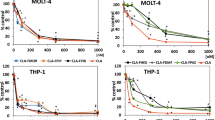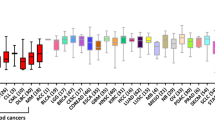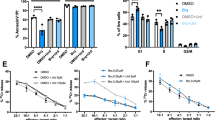Abstract
L1210 leukaemia cells were preloaded with [3H methotrexate] (MTX) to saturate high-affinity intracellular sites, and were then incubated with [3H]MTX to determine the steady-state intracellular MTX concentrations at extracellular concentrations ranging from 10 μM to zero. In addition, incubations to generate incomplete saturation of high-affinity intracellular MTX-binding sites were also carried out. Following determination of the total intracellular MTX, cells were pulsed with deoxyuridine (UdR) and its incorporation into DNA examined to assess the role of exchangeable and bound intracellular MTX on DNA synthesis. Further, cell pellets were disrupted and dihydrofolate reductase (DHFR) activity determined under each experimental condition. Extracellular MTX concentrations in excess of 1 μM depressed UdR incorporation to <2% of control, but incorporation rapidly recovered to 62% of control at the point of MTX-DHFR equivalence, and exceeded control values when all high-affinity sites were not saturated. DHFR activity was undetectable at extracellular MTX concentrations >0.50 μM, and never exceeded 6.09% of control at the “equivalence point” where all high-affinity sites were saturated. When less than 10% of potential inhibitor sites were occupied, enzyme activity increased rapidly, but never reached control. However, 5% of the DHFR activity was sufficient to permit UdR incorporation to continue at 50% of control levels, and UdR incorporation returned to control levels at 20% of the DHFR activity. The relationship between cellular MTX content and DNA synthesis or DHFR activity is sigmoid, suggesting a reversible interaction between enzyme and inhibitor. This lends support to the notion that “free” intracellular MTX is necessary for a maximal antitumour effect, and may explain its role in “high-dose” MTX therapy in man.
This is a preview of subscription content, access via your institution
Access options
Subscribe to this journal
Receive 24 print issues and online access
$259.00 per year
only $10.79 per issue
Buy this article
- Purchase on Springer Link
- Instant access to full article PDF
Prices may be subject to local taxes which are calculated during checkout
Similar content being viewed by others
Rights and permissions
About this article
Cite this article
Bender, R., Makula, D. Effect of Interaction Between Methotrexate and Dihydrofolate Reductase on DNA Synthesis in L1210 Cells In Vitro. Br J Cancer 37, 403–410 (1978). https://doi.org/10.1038/bjc.1978.60
Issue Date:
DOI: https://doi.org/10.1038/bjc.1978.60
This article is cited by
-
Direct control of CAR T cells through small molecule-regulated antibodies
Nature Communications (2021)
-
Teriflunomide and Its Mechanism of Action in Multiple Sclerosis
Drugs (2014)



